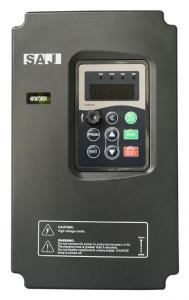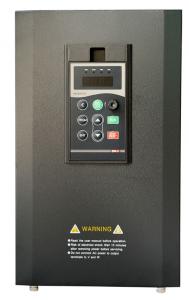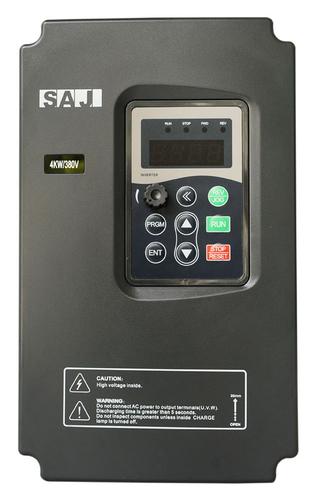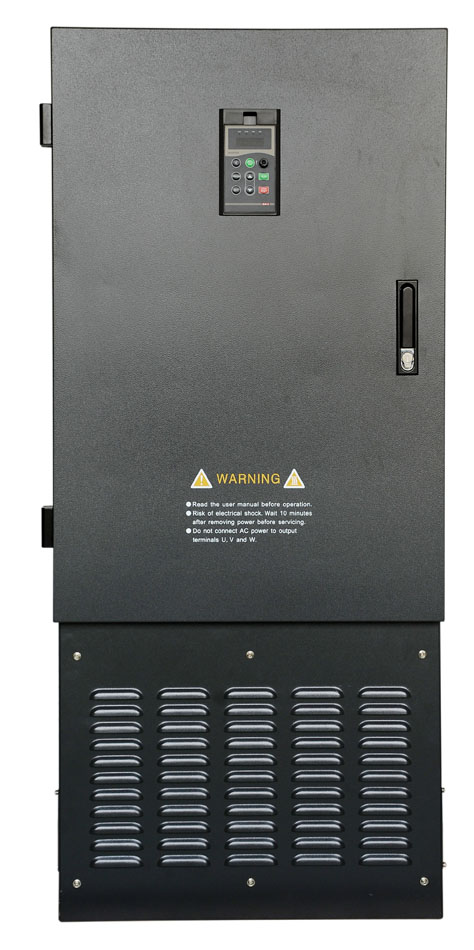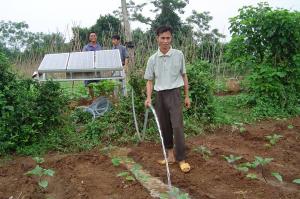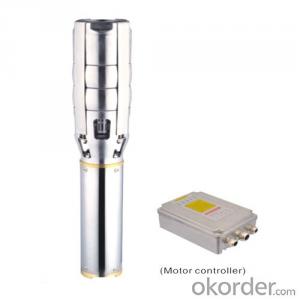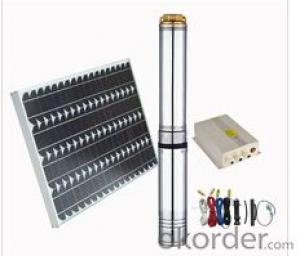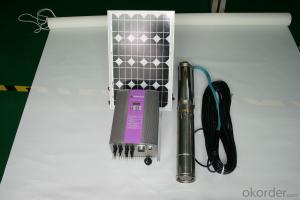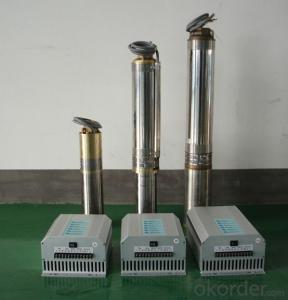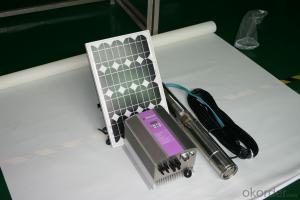Se1 Solar Pump Controller Suitable for Different Areas
- Loading Port:
- Guangzhou
- Payment Terms:
- TT OR LC
- Min Order Qty:
- 1 watt
- Supply Capability:
- 1000 watt/month
OKorder Service Pledge
OKorder Financial Service
You Might Also Like
Advantages of SAJ solar pumping system
■ The system can carry out independent power supply and solve the water problem in off-grid regions.
■ MPPT function of solar inverter is excellent in tracing the maximum power point with high reliability and quick response.
■ The system is environmentally friendly without storage battery.
■ Intelligent IGBT modules of high performance inside can make the conversion efficiency up to 98% and above.
■ Users can select the function of water-level detecting to prevent the system from overflow and dry extraction.
Applications:
Barren Mountain Water Supply, Environment Improvement, Meadow Water Supply, Reducing Water Loss, Life Water Supply and so on.
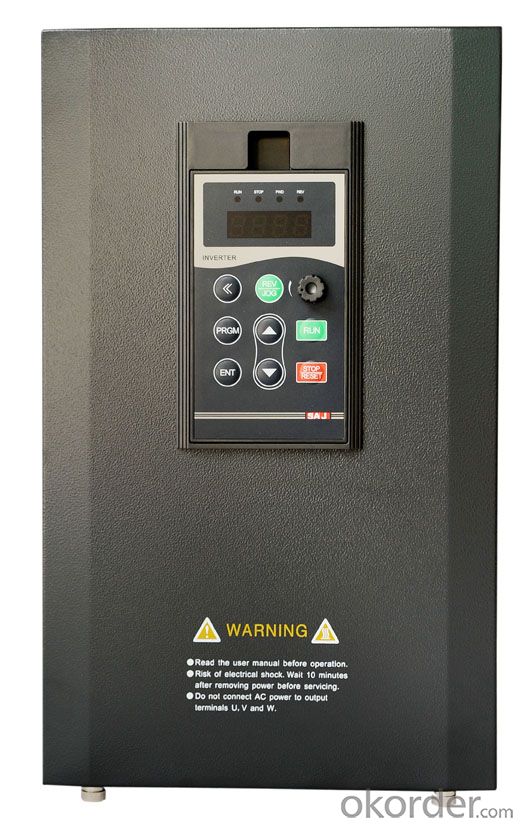
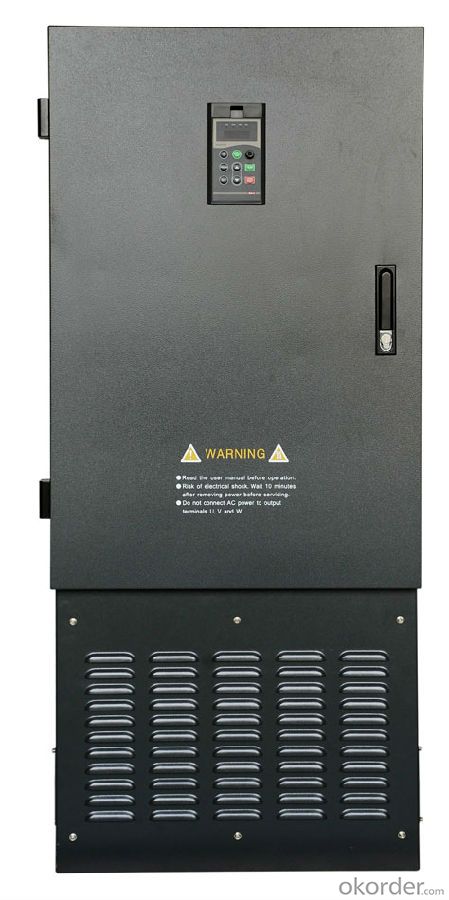
FAQ
1. How long will my inquiry get response?
Your inquiry related to our products or prices will be replied within 24 hours.
2. Can I get professional service and suggestion?
Well-trained and experienced staffs to answer all your questions in fluent English.
3. Do you accept OEM or customized design?
OEM & ODM, any your customized lightings we can help you to design and put into product.
4. What if I need specific design?
Distributorship are offered for your unique design and some our current models.
- Q: Can a solar pump be used for water supply in remote wildlife reserves?
- Yes, a solar pump can be used for water supply in remote wildlife reserves. Solar pumps are an excellent solution for remote areas as they rely on solar energy to operate, eliminating the need for electricity or fuel. They are environmentally friendly, cost-effective, and can provide a reliable water supply for wildlife in these remote locations.
- Q: How does a solar pump handle power fluctuations in the electrical grid?
- A solar pump is not affected by power fluctuations in the electrical grid as it operates independently using solar energy. It is not reliant on the grid for power supply, ensuring consistent and uninterrupted operation even during fluctuations or power outages.
- Q: Are there any maintenance requirements for the solar panels used in a solar pump system?
- Yes, there are maintenance requirements for the solar panels used in a solar pump system. Regular maintenance is essential to ensure the efficient functioning and longevity of the solar panels. Some common maintenance requirements include: 1. Cleaning: Solar panels can accumulate dust, dirt, leaves, and bird droppings over time, which can reduce their efficiency. Regularly cleaning the panels with water and a soft brush can help remove these contaminants and ensure optimal performance. 2. Inspection: Regularly inspecting the solar panels for any signs of damage, such as cracks, loose connections, or corrosion, is important. Any issues should be addressed promptly to avoid further damage or reduced efficiency. 3. Monitoring: Monitoring the performance of the solar panels regularly helps identify any abnormal behavior or drop in efficiency. This can be done by observing the output levels or using monitoring systems that provide real-time data on the panel's performance. 4. Shading: Ensuring that the solar panels are not shaded by trees, buildings, or other obstructions is crucial. Shading can significantly reduce the energy output, so trimming any overhanging branches or removing objects blocking sunlight is important. 5. Battery maintenance: If the solar pump system has a battery, it is essential to monitor and maintain the battery's health. This may involve checking the battery's charge levels, cleaning the terminals, and replacing the battery when necessary. 6. Professional servicing: It is recommended to have a professional inspect and service the solar pump system periodically. They can perform more advanced maintenance tasks, such as checking the inverter, testing the electrical connections, or evaluating the overall system performance. By following these maintenance requirements, solar panels used in a solar pump system can operate at their maximum potential and have a longer lifespan, ensuring consistent and reliable water pumping.
- Q: What is the role of solar water pump?
- Installation and maintenance is simple, low operating costs, suitable for unattended and so on.
- Q: Can a solar pump be used to pump oil or gas?
- No, a solar pump is not typically used to pump oil or gas. Solar pumps are primarily designed to pump water or other fluids that are not as dense or viscous as oil or gas.
- Q: What is the maximum elevation a solar pump can pump water to?
- The maximum elevation a solar pump can pump water to will depend on various factors such as the power and efficiency of the solar panel, the capacity and pressure of the pump, as well as the distance and elevation between the water source and the desired destination. In general, solar pumps are capable of pumping water to elevations ranging from a few meters to several hundred meters. However, it is important to note that as the elevation increases, the pumping capacity of the solar pump may decrease due to the effects of gravity and friction in the pumping system. Additionally, the efficiency of the solar panel may also be affected by factors such as shading, orientation, and weather conditions, which can further impact the maximum elevation the pump can reach. To determine the specific maximum elevation a solar pump can achieve, it is recommended to consult the manufacturer's specifications and guidelines for the particular solar pump model being used. Additionally, seeking advice from a professional or a solar pump expert can help in accurately assessing the maximum elevation capabilities based on the specific requirements and conditions of the pumping system.
- Q: Can solar pumps be used to create a water feature in a garden?
- Yes, solar pumps can be used to create a water feature in a garden. Solar pumps are designed to be energy-efficient and can operate using solar power, making them an environmentally friendly option for creating water features such as fountains, ponds, or waterfalls in gardens. They can provide a constant flow of water without the need for electricity or traditional pumps, making them a convenient and sustainable choice for garden water features.
- Q: Can solar pumps be used in areas with high humidity or heavy rainfall?
- Yes, solar pumps can be used in areas with high humidity or heavy rainfall. The efficiency of solar pumps may be slightly affected by high humidity, but they can still function effectively. Additionally, heavy rainfall can help replenish water sources, making solar pumps an ideal choice for such areas.
- Q: How long does it take to recoup the cost of a solar pump through energy savings?
- The time it takes to recoup the cost of a solar pump through energy savings can vary depending on factors such as the initial cost of the pump, the energy efficiency of the pump, the amount of energy savings achieved, and the local energy rates. However, on average, it can take anywhere from 5 to 10 years to recoup the cost of a solar pump through energy savings.
- Q: Can a solar pump system be integrated with a smart home or automation system?
- Yes, a solar pump system can be integrated with a smart home or automation system. By connecting the solar pump system to a smart home or automation system, users can remotely monitor and control the pump's operation, adjust settings, and receive alerts and notifications. This integration allows for increased efficiency, convenience, and energy management, making it a valuable addition to a smart home or automation system.
Send your message to us
Se1 Solar Pump Controller Suitable for Different Areas
- Loading Port:
- Guangzhou
- Payment Terms:
- TT OR LC
- Min Order Qty:
- 1 watt
- Supply Capability:
- 1000 watt/month
OKorder Service Pledge
OKorder Financial Service
Similar products
Hot products
Hot Searches
Related keywords
